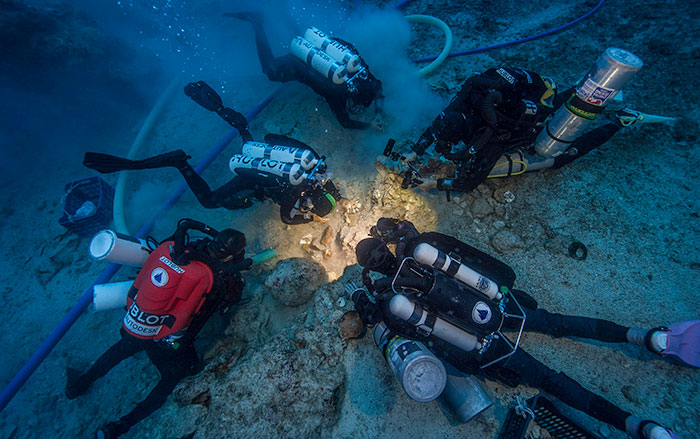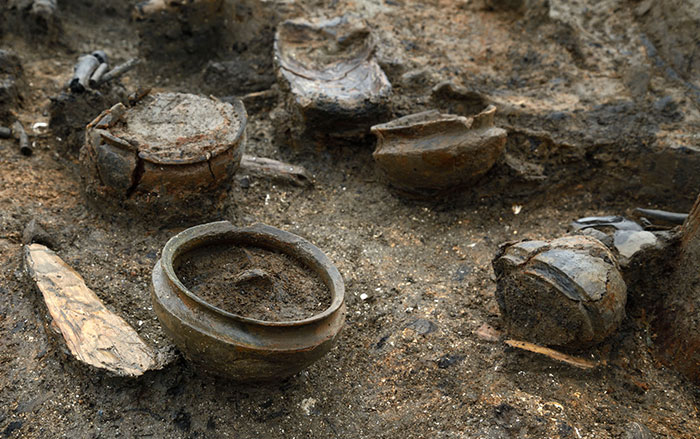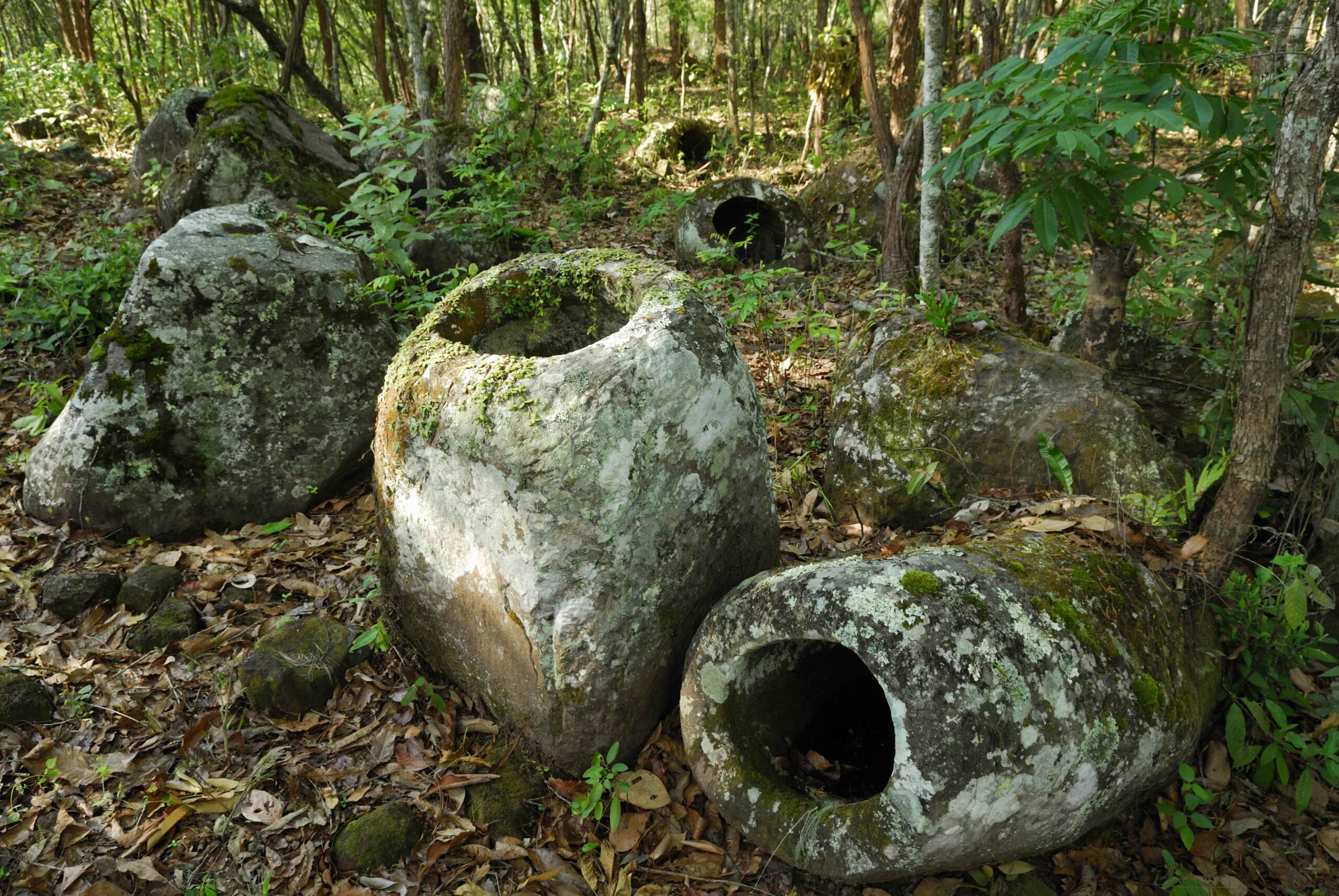
NARA PREFECTURE, JAPAN—The Asahi Shimbun reports that holes for nine pillars of a large structure dating to the late-seventh century have been unearthed at the “square of zelkova trees,” in the ancient capital of Asuka. The imperial palace stood to the south of square, which was known as the place where the Empress Saimei entertained guests from remote provinces, and her son, Emperor Tenji, cemented his reign by removing the competing Soga clan from power. The holes for the newly discovered building measure nearly three feet deep and four feet in diameter, and suggest that the building measured 36 feet long by 20 feet wide. “The square was almost certainly a multipurpose space,” explained Kanekatsu Inokuma of Kyoto Tachibana University. “The building may have been the venue of the banquets or some sort of lodging.” Masashi Kinoshita of Tokyo Gakugei University thinks the building may have served as a warehouse for the palace. To read more about Japan, go to “Dogu Figurine.”











